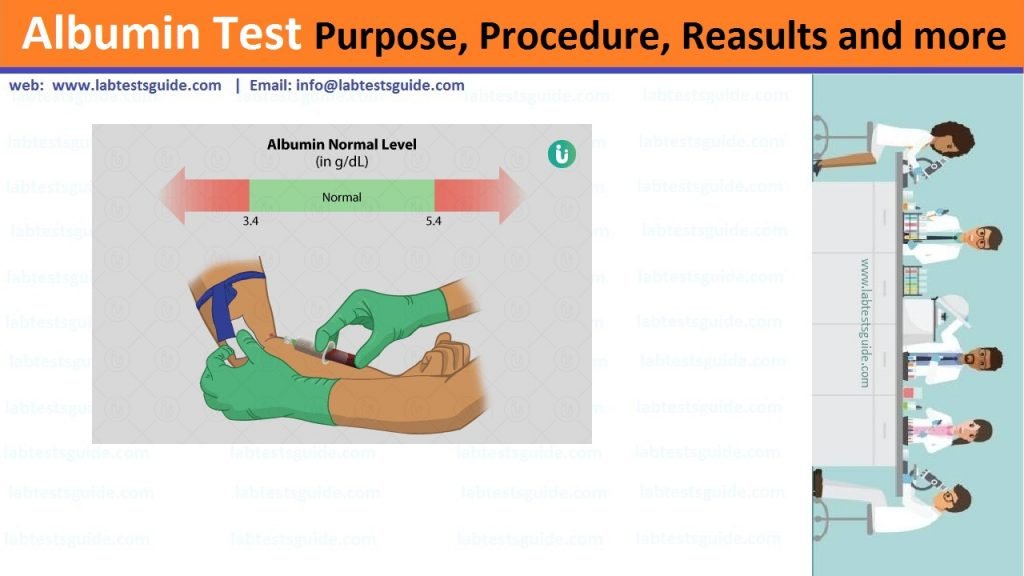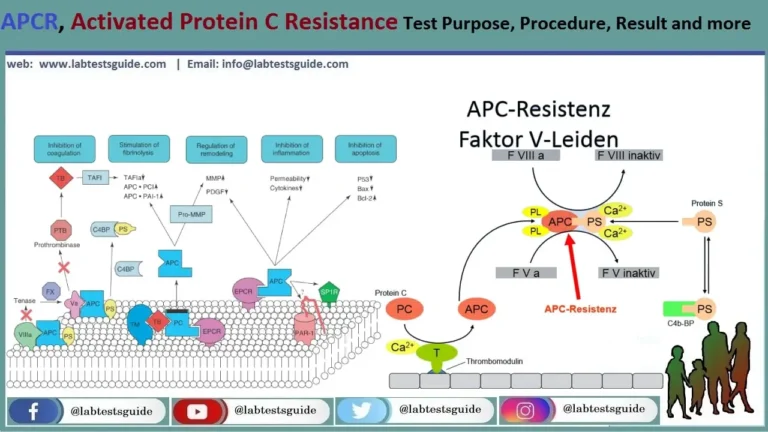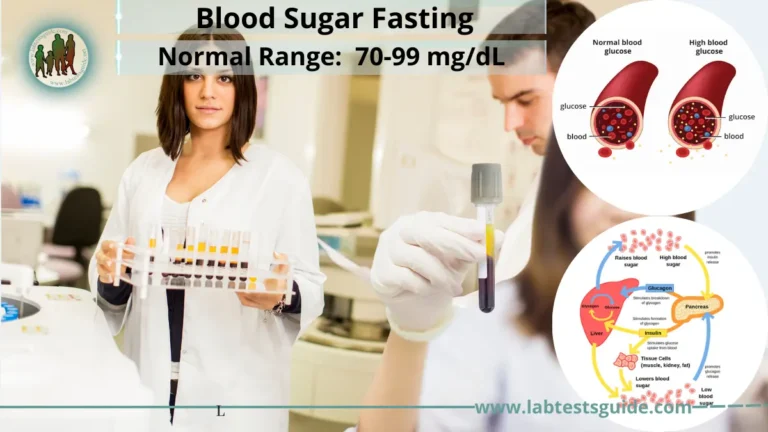Proteins circulate throughout your blood to help your body maintain fluid balance. Albumin is a type of protein the liver makes. It’s one of the most abundant proteins in your blood.

- Read more about Total Protein
- Read more about Globuline
- Read more about A/G Ratio
Also Known as: Albumin, ALB, Serum Albumin
Test Panel: Total Bilirubin, Conjagated Bilirubin, Unconjugated Bilirubin, ALT, AST, ALP, Total Protein, Albumin, Globulin, A/G ratio, GGT,
Why Get Tested:
This test is needed:
- in liver diseases.
- kidneys diseases and nephrotic syndrome patient.
- In patients with severe burn.
- As a part of other tests.
- In a patient suspected of malnutrition.
When to get Tested:
- when you have symptoms of a liver disorder
- when you have symptoms of a kidney disease
- When you have unintended weight loss
- When you have symptoms associated with malnutrition
Sample Required
- It is done on the serum of the patient.
- How to get good serum: Take 3 to 5 ml of blood in the disposable syringe or in vacutainer. Keep the syringe for 15 to 30 minutes at 37 °C and then centrifuge for 2 to 4 minutes to get clear serum.
- The random sample can be taken.
- Use a freshly prepared serum or store at 4 °C which may be stable more than 72 hours.
Precaution for Sample
- Fasting sample is preferred.
- Specimen with lipemia or hemolysis should be avoided.
- Avoid prolonged tourniquet.
- Take into account physical exercise and fever where there is increased filtration.
Normal Values:
- Total protein = 6.4 to 8.3 g/dL.
- Albumin = 3.5 to 5 g/dL.
- Globulin = 2.3 to 3.4 g/dL
- Acute and chronic inflammations:
- The cause is hemodilution, loss into extravascular space, increased consumption by the cells and decreased synthesis.
- like Rheumatoid arthritis, granulomatous process, most bacterial infections, vasculitis, ulcerative bowel disease, and certain parasitic infestation.
- The cause is hemodilution, loss into extravascular space, increased consumption by the cells and decreased synthesis.
- Due to decreased synthesis by the liver:
- This may be due to the increased amount of immunoglobulins, loss of albumin into the extravascular space.
- This may be also due to the decreased synthesis because of toxins or alcohol.
- The liver can compensate for the synthesis of albumin approximately up to 95% of the loss of liver function.
- In acute and chronic liver diseases, Amyloidosis, Malignancies, Congestive heart disease, and constrictive pericarditis.
- Urinary loss:
- As albumin is relatively small and globular, a significant amount is filtered into the glomerular urine. Then the majority is reabsorbed by the proximal tubular cells.
- Normal urine contains 20 mg of albumin per gram of creatinine.
- Excretion above this level is seen in:
- Increased glomerular filtration.
- Tubular damage.
- Hematuria.
- Or a combination of the above factors.
- Excretion above this level is seen in:
- Examples are:
- In Nephrotic syndrome.
- Thermal burns.
- Trauma and crush injuries.
- Transudation and exudation from any hollow organs.
- Increased loss via body fluids.
- Increased catabolism:
- leads to decrease albumins like fever, antimetabolites, thyrotoxicosis, and certain malignancies.
- A gastrointestinal loss:
- With the inflammatory disease of GIT.
- Chronic protein-losing enteropathy.
- Increased blood volume (hypervolemia):
- This leads to a decrease in albumins like exogenous estrogen therapy, Myeloma, and congestive heart failure.
- Serum level decreases in pregnant ladies.
- The person on a low protein diet.
- It decreases:
- After weight loss surgery.
- Whipple disease.
- Sprue.
- Crohn’s disease.
- Analbuminemia is a rare genetic deficiency where plasma albumin level is <0.5 g/L. Major clinical manifestations are related to abnormal lipid transport.
- Summary of decreased albumin:
- Inflammations.
- Hepatic diseases.
- Urinary loss.
- Gastrointestinal loss.
- Edema and ascites.
- Protein malnutrition
Albumin level increases in:
- Naturally, there is no reason for the increase in the albumin level.
- Dehydration or any other cause leading to a decrease in the plasma volume causes an increase in the level.
- High protein diet.
- When the tourniquet is applied for a long time.
Tabulated causes of Hyperalbuminemia and Hypoalbuminemia:
| Hypoalbuminemia | Hyperalbuminemia |
| Nephrotic syndrome | Dehydration |
| Burns | High protein diet |
| Blood loss | False value due to prolonged tourniquet |
| Malignancies | |
| Inflammatory process | |
| Liver diseases | |
| Decreased protein intake | |
| Ascites |
Possible References Used






0 Comments